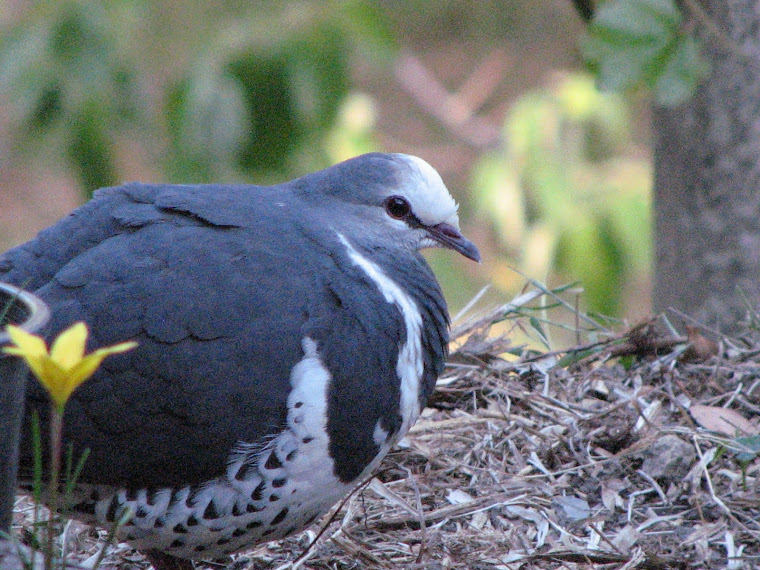Citizen Science and Cryptozoology, data received from listeners during
18 years of wildlife talkback on ABC North Coast New South Wales Local Radio.
Gary Opit
Published in the Australian Zoologist, Dangerous ideas in zoology, volume 38 number 3, 2017
Abstract
A citizen science project
was begun on 11 February 1997 with a regular live-to-air wildlife talkback
segment on ABC North Coast NSW Local Radio. Listeners were encouraged to phone
in to report interesting observations. This public endeavour aimed to promote
interest in wildlife among the listeners and to find the range of interest that
the public have with wildlife, determined by the number of species that
listeners would report. The 18 years of wildlife talkback radio resulted in 342 identifiable species
discussed providing evidence that the public was interested in a very wide
array of wildlife species.
Additional to the reports of well-known fauna
species, one report of an extinct bird was received and unusual reports were
regularly received describing mammals unknown to Australian zoology. This paper
includes some of the stories that were received and these may contain errors
and fabrications. They are recorded here so that others can learn of them. Parts
of this paper are excerpts from my book, Australian
Cryptozoology, and this paper now also gives new information.
The only physical evidence for the existence
of one of these animals was the discovery of a unique method of predation on wood-boring
beetle larvae. This involved the precise removal of pieces of wood, 12 to 15 cm
long, 3 to 4 cm wide and 1 to 2 cm thick, within one metre of the ground. This
created distinctive vertical slots in the base of small green wattle trees Acacia
irrorata. On the 27th and 28th October 2003 in the
Jimna State Forest adjacent the Conondale National Park in South-east Queensland
over 500 trees were examined and found to contain this precise method of
predation on wood-boring beetle larvae.
Key Words
ABC radio; wildlife talkback; citizen science; identifiable
species; cryptozoology; unidentifiable mammals; psychological element; eyewitness
reliability; physical evidence.
A citizen science project was begun on 11 February 1997 with a regular live-to-air wildlife talk-back segment on ABC North Coast NSW Local Radio. Listeners were encouraged to phone in to report interesting observations. This public endeavour aimed to promote interest in wildlife among the listeners and to find the range of interest that the public have with wildlife, determined by the number of species that listeners would report. The 20 years of wildlife talk-back radio resulted in 342 identifiable species discussed providing evidence that the public was interested in a very wide array of wildlife species. Additional to the reports of well-known fauna species, one report of an extinct bird was received and unusual reports were regularly received describing mammals unknown to Australian zoology.
I initiated these live-to-air broadcasts in 1997 to add an
environmental dialogue to local radio and address issues concerning the
environment. Dunlap and Van Liere
proposed in their paper, the new environmental paradigm (1978), in the Journal of Environmental Education, that the source of the earth’s ecological problems is due to the
anthropocentric worldview and that this could be challenged by a new environmental paradigm,
in which individuals believe in the necessity of balancing economic growth with
environmental protection.
During these
broadcasts I gave a synopsis on seasonal wildlife behaviour and drew
parallels between the behaviour of animals and the behaviour of people and how
the health of humans, society and civilisation depended on the health of the
surrounding natural environment. I
also received listeners' calls identifying all species of fauna from their
descriptions of morphology and vocalisations.
Besides the attempt to locally increase awareness of a new environmental paradigm, the aim
of the broadcasts was to gather information about the distribution and relative
abundance of well-known animals and to help broaden our understanding of the
current distribution of our wildlife, particularly those that are rare or
outside expected distribution. From 1997 to 2006 these were fortnightly
broadcasts on Tuesday mornings from 10.15 am until 10.45 am. The segment was
then renamed Wildlife Wednesday and continues to operate every week throughout
the year from 6.40 am. Additionally I conducted a few nationwide broadcasts.
Between 11 February 1997 and 11 February 2015 I received approximately
900 phone calls, emails, some with photographs and illustrations, and
identification requests posted onto the ABC North Coast New South Wales Local
Radio Facebook site. The name of the caller, the date and locality of their
sightings, a description of the species referred to and its behaviour were
recorded and placed in a table of wildlife observations resulting in 342
identifiable species discussed. Of these, 61 were invertebrate species, eight
were fish, 19 were amphibian, 36 were reptile, 181 were bird and 37 were mammal
species.
All of these records had at least two pieces of biological
information core to science, where and when the species was observed. Darwin
Core standards define over 130 different pieces of natural history information
that can be associated with an individual specimen record. The minimum Darwin
Core data-set is identification with its special and temporal metadata which
makes it a usable scientific record (Walker 2014). Major issues with the
collection of this data were its reliability and the likelihood that listeners
would not take the time and effort to communicate information on wildlife
species that did not stimulate their interest. The values of these observations
were that they promoted interest in wildlife among the listeners and provided a
starting point for further investigation and verification.
Dunlap, R.
E., & Van Liere, K. D. (1978). The new environmental paradigm: A proposed
measuring instrument and preliminary results. Journal of Environmental Education, 9, 10–19.
Walker, K. 2014. BowerBird: a home
for Australian citizen science. Wildlife
Australia 51 4 summer, PP34.
Wildlife Preservation Society of Queensland, Brisbane


No comments:
Post a Comment